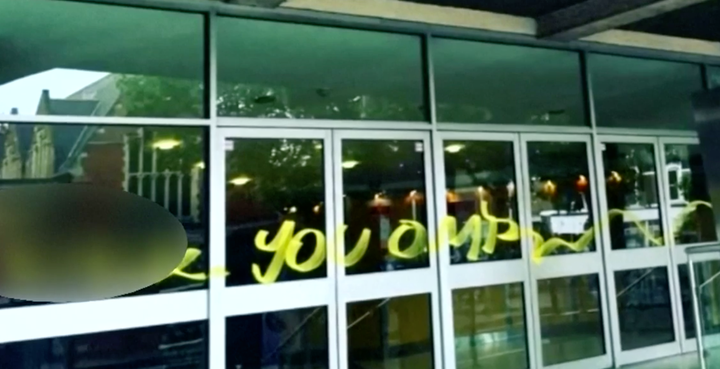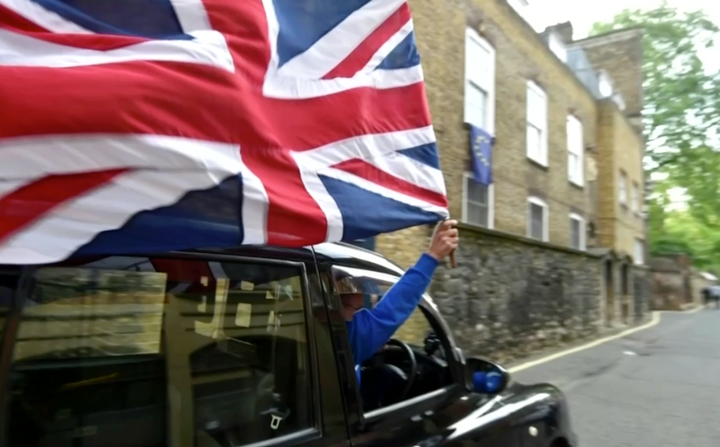Record levels of hate crime were reported by three-quarters of police forces across the UK in the aftermath of last year’s EU referendum, new analysis has shown.
In some areas of England and Wales the number of incidents jumped by more than 50%, while in Dorset hate crime reports were up 100%.

A human rights organisation has said the UK should prepare for the possibility of further spikes in offences once the Brexit process has begun.
The figures, compiled by the Press Association, provide the first complete picture of hate crime recorded by police in England and Wales following the referendum on June 23.
They show that in the three months ending September 2016:
33 out of 44 forces recorded the highest quarterly number of hate crimes since comparable records began in April 2012
Three forces each recorded more than 1,000 hate crimes: the Metropolitan Police (3,356), Greater Manchester (1,033) and West Yorkshire (1,013)
Only four forces reported a decrease on the previous three months
The Equality and Human Rights Commission (EHRC) said the findings suggested a small number of people used the Brexit vote “to legitimise inexcusable racism and prejudice”, while the charity Victim Support said that more needed to be done to encourage victims to come forward.

Provisional figures on hate crimes published by the Home Office in October 2016 suggested that offences in July 2016 were 41% higher than in July 2015.
The new analysis shows that a rise in incidents was seen in almost every force in England and Wales, both year-on-year and when comparing the three months either side of the referendum.
The Press Association also cross-referenced data on offences with the results of the EU referendum to see if there was any pattern to the level of hate crime.
In 36 police force areas, a majority of voters backed Leave in the referendum - and the quarterly hate crime figure rose in all of them except two.
The area with the biggest Leave vote, Lincolnshire, saw hate crimes jump by 59%.
But the figures do not suggest a trend across the country. Two forces that covered areas with a large Remain vote - Merseyside and Thames Valley - recorded rises in hate crime of 19% and 20% respectively.
David Isaac, chair of the EHRC, said it “must be sensible to prepare for any possible spikes” in hate crime once Brexit negotiations got under way.
“The vast majority of people who voted to leave the European Union did so because they believed it was best for Britain and not because they are intolerant of others,” he said.
Lucy Hastings, director at Victim Support, revealed the charity last year supported 16,000 victims of hate crime in England and Wales and confirmed a spike in referrals in the immediate aftermath of the referendum.
She said the rise could be linked to increased publicity about hate crimes, which “encouraged more people to report or seek support”.
The Home Office said Britain had some of the strongest legislation on hate crime anywhere in the world.
“The Home Secretary has been crystal clear that crime motivated by hostility and prejudice towards any group in society has no place whatsoever in a Britain that works for everyone,” a spokesman said.
The full list of hate crime reports in England and Wales
Dorset 104* (up 100%)
Nottinghamshire 189* (up 75%)
North Yorkshire 64* (up 68%)
West Mercia 247* (up 64%)
Devon and Cornwall 220* (up 63%)
Leicestershire 213* (up 60%)
Kent 277* (up 60%)
Lincolnshire 78* (up 59%)
Humberside 140* (up 57%)
Dyfed-Powys 35* (up 52%)
Northumbria 394* (up 48%)
West Yorkshire 1,013* (up 46%)
Essex 376* (up 41%)
Wiltshire 134* (up 38%)
Suffolk 123* (up 37%)
British Transport Police 620* (up 34%)
Hampshire 463* (up 33%)
Sussex 385* (up 32%)
Hertfordshire 266* (up 30%)
Cleveland 159* (up 29%)
West Midlands 923* (up 27%)
Norfolk 130* (up 25%)
Gwent 77 (up 22%)
North Wales 56 (up 22%)
Lancashire 128 (up 21%)
Metropolitan Police 3,356* (up 20%)
Thames Valley 286* (up 20%)
Avon and Somerset 449* (up 19%)
Merseyside 477* (up 19%)
Greater Manchester 1,033* (up 19%)
Cheshire 195* (up 18%)
Durham 66 (up 16%)
Cumbria 50 (up 14%)
South Wales 276* (up 10%)
Cambridgeshire 179* (up 9%)
Derbyshire 117 (up 8%)
Staffordshire 237* (up 6%)
Warwickshire 106* (up 6%)
Bedfordshire 133* (up 6%)
Northamptonshire 79 (up 4%)
South Yorkshire 225 (down 1%)
Gloucestershire 55 (down 4%)
Surrey 137 (down 7%)
City of London 25 (down 7%)
Total: 14,295* (up 27%)
The Independent reported figures with an asterisk denote the highest quarterly figures since 2012.
Note: The Press Association compiled its figures from open data published by every police force in England and Wales. Comparable data is not available for Scotland and Northern Ireland.
